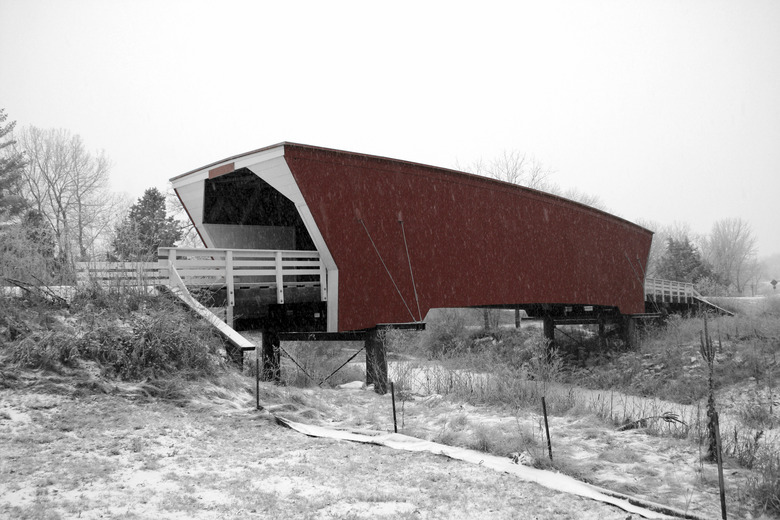Iowa's Winter Cold Temperature History
On February 3, 1996, Elkader, Iowa, fell to -43.9 degrees Celsius (-47 Fahrenheit). Polar bears can survive that kind of frigid weather, but humans cannot without protection. Thermometer readings that low may be rare, but Iowa has a history of producing sub-zero temperatures year after year.
Weather in Iowa
Weather in Iowa
Climate varies significantly in Iowa because of its latitude and location near the center of the country. Although severe temperature drops occur, the state isn't always frigid — the average temperature ranges from 7.2 degrees Celsius (45 Fahrenheit) in the extreme north to 11.1 degrees Celsius (52 Fahrenheit) in the southeastern corner. Temperatures can also reach 30.6 degrees Celsius (87 Fahrenheit) in the southwest. Northwesterly winds from Canada make winters dry and cold with January being the coldest month. Iowa is also relatively flat with elevation changing minimally — it only varies from 480 feet to 1,679 feet.
Historical Cold Weather Data
Historical Cold Weather Data
The lowest recorded temperatures throughout the month of January in Des Moines tend to fall below -17.8 degrees Celsius (0 Fahrenheit), according to Weather Warehouse. While it only dropped to -18.9 Celsius (-2 Fahrenheit) in 2013, it reached a chilly -27.2 Celsius (-17 Fahrenheit) in 2010, -28.3 Celsius (-19 Fahrenheit) in 2009 and -24.4 Celsius (-12 Fahrenheit) in 2008. A rare warming trend put January of 2006 at -9.4 Celsius (15 Fahrenheit). January of 1996 was extremely cold, with temperatures plunging to -29.4 Celsius (-21 Fahrenheit). Similar trends go back to the earliest date Weather Warehouse lists: January of 1949, when the temperature fell to -25 Celsius (-13 Fahrenheit).
Other States in the Deep Freeze
Other States in the Deep Freeze
Iowa isn't the only Midwest state to experience frigid winter temperatures. According to the National Oceanic and Climatic Data Center, the winter of 2013 through 2014 was the coldest ever recorded in some parts of the region. Along with Iowa, states such as Indiana, Missouri and Illinois had one of their top-10 coldest winters. Waterloo, Iowa, saw its third coldest January and February ever during this time period.
Staying Safe in the Cold
Staying Safe in the Cold
Extreme cold in Iowa harms plants, shuts down schools and endangers life. One factor to consider if you live in that region is wind child. When the wind blows in cold weather, you feel colder than the actual temperature because the air blows away heat from your skin faster. For instance, if the temperature is -17.8 Celsius (0 Fahrenheit) and the wind blows at 15 mph, it feels like -28.3 Celsius (-19 Fahrenheit) — exposed skin can freeze in 30 minutes. People who work in extremely cold weather can experience frostbite and hypothermia. Wear several layers of protective clothing before venturing into extremely cold weather. Cover extremities and verify that your home heating system is working. If you must travel, ensure that your vehicle has emergency supplies such as blankets and booster cables.
Cite This Article
MLA
Lee, Kevin. "Iowa's Winter Cold Temperature History" sciencing.com, https://www.sciencing.com/iowas-winter-cold-temperature-history-7443044/. 24 April 2017.
APA
Lee, Kevin. (2017, April 24). Iowa's Winter Cold Temperature History. sciencing.com. Retrieved from https://www.sciencing.com/iowas-winter-cold-temperature-history-7443044/
Chicago
Lee, Kevin. Iowa's Winter Cold Temperature History last modified March 24, 2022. https://www.sciencing.com/iowas-winter-cold-temperature-history-7443044/
